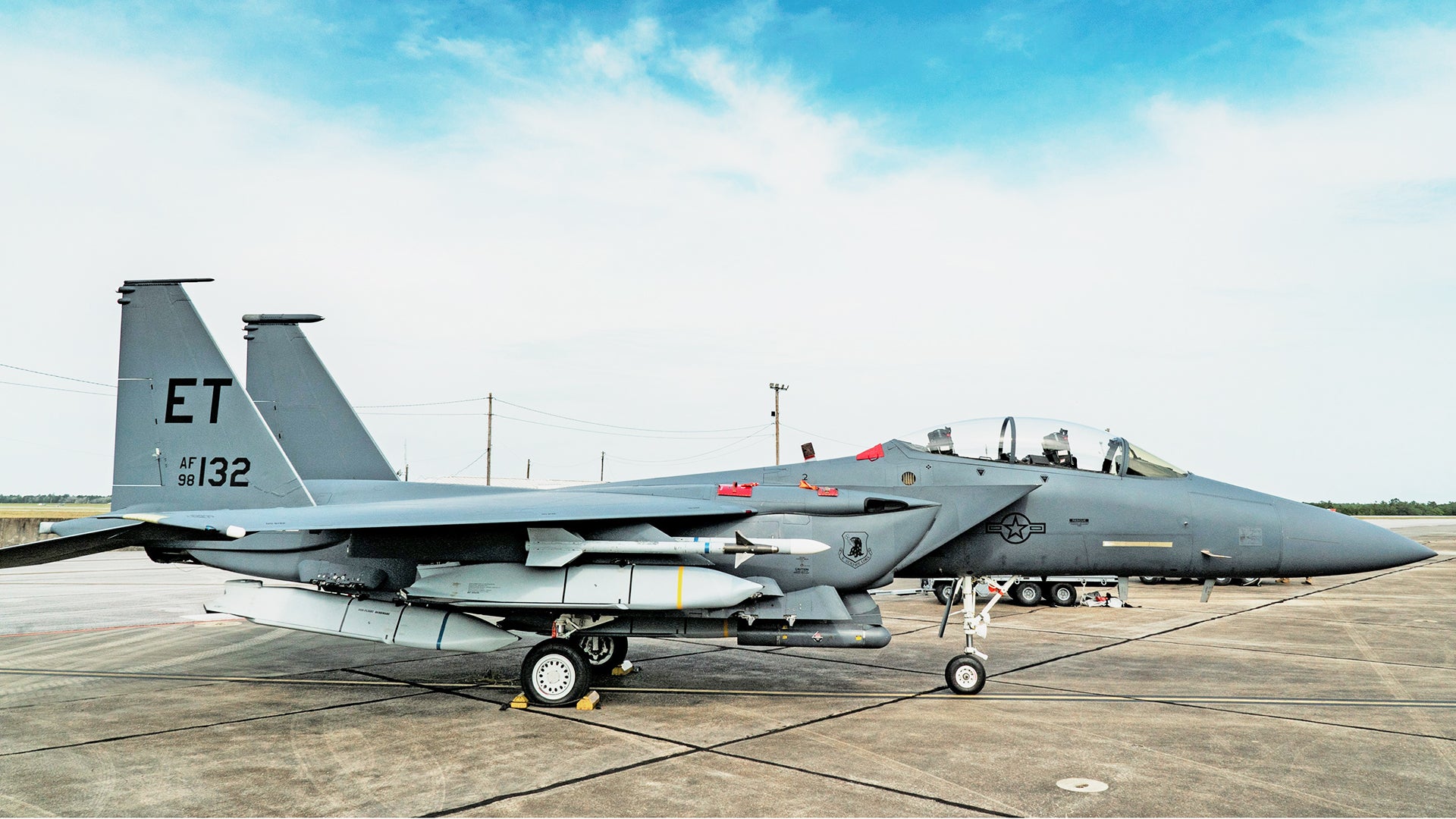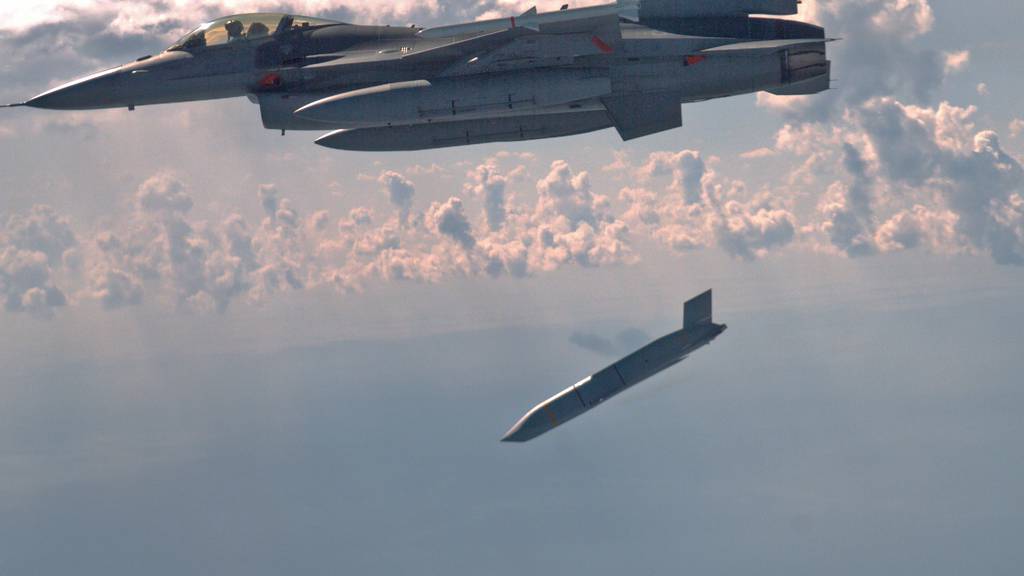Forest Green
ACCESS: Above Top Secret
- Joined
- 11 June 2019
- Messages
- 5,102
- Reaction score
- 6,693
Seems so odd to me, seeing a 4500lb load aft of the main landing gear...

I would have thought the center pair of fuselage stations would be more optimal but maybe that creates separation issues.Seems so odd to me, seeing a 4500lb load aft of the main landing gear...
In the early 2010s when ROKAF was trying to procure JASSM for their F-15Ks, there was a known problem regarding a possible inteference between JASSM's tail folding mechanism and the pylon when the missile was mounted on the left wing. Sources reported that it was a F-15K specific problem due to beefier pylons, but I'm not really sure if the K variant actually has a wider pylon that'd casue an interference issue that is not present on the E variant. Anyways, they went with the KEPD 350 in the end instead so problems solved.I would have thought the center pair of fuselage stations would be more optimal but maybe that creates separation issues.
That's what you mean. Well, yes, it seems like there could be an issue concerning interference with the rear-end of the LANTIRN.I was referring to the pair of missiles mounted on the back corners - there are three sets of hard points wired for PGMs on the corners of the airframe. I'd have thought the central set would center the mass of those heavy stores better, putting all five missiles roughly in a band around the center of the aircraft. But there must have been some issue with placing them there.
I've often wondered what the ramifications of getting heavy weapon, like JASSM or a 2,000lb bomb, hung up on one of those aft positions. Does that mean you can't drop other weapons without moving the CG too far aft?
I guess it depends what the stability margins are and what the FCS can handle.I've often wondered what the ramifications of getting heavy weapon, like JASSM or a 2,000lb bomb, hung up on one of those aft positions. Does that mean you can't drop other weapons without moving the CG too far aft?
That's what you mean. Well, yes, it seems like there could be an issue concerning interference with the rear-end of the LANTIRN.
You're probably right on that.Main landing gear is probably the issue.
LANTIRN is more inboard and I'm not even sure a centrally mounted JASSM would reach the pod's rear end.
I've seen footage of the USAF dropping a 2000lb JDAM from an aft station like that before, but not a JASSM.I was referring to the pair of missiles mounted on the back corners - there are three sets of hard points wired for PGMs on the corners of the airframe. I'd have thought the central set would center the mass of those heavy stores better, putting all five missiles roughly in a band around the center of the aircraft. But there must have been some issue with placing them there.
Has the USAF tested actually *releasing* the weapons from the aircraft this way? I was under the impression that the 2021 test was less about flying a mission with five missiles and more about using the aircraft to lift weapons to a forward austere base as part of the ACE program.
I guess it's not a problem then, also maintains the roll-axis symmetry of the aircraft longer doing it that way.They release first from the aft station already.
And if the weapon is hung? Does that mean they can't drop anything else? Saw a picture from Desert Storm where an F-15E had four 2000lb bombs loaded on the CFTs and had always wondered about it.They release first from the aft station already.
Can the F-35 eject its pylons?
I imagine that they would be ejected as once the store they've been carrying has been ejected/released they're just draggy deadweight that increases the F-35's RCS.


US State Department approves JASSM-ER missile sale to Japan
Japan plans to upgrade 68 of its Mitsubishi-built F-15J Eagle interceptors with new radars, mission computers and a standoff land-attack capability.www.defensenews.com
Moving targets suggests something like the SDB2 seeker, though apparently the JASSM already uses IIR.
Moving targets suggests something like the SDB2 seeker, though apparently the JASSM already uses IIR.
Agreed. 12deg FOV is like looking through a soda straw...JASSM does have an IIR sensor but its field of view is reportedly 12 degrees (at least in the early models). It also apparently only activates in the last seconds (reportedly 8) to get a view of the target and select the exact aimpoint. Increases in processor power and changes to software probably can make this more flexible - activating earlier, maneuvering to pan the sensor across a wider field - but the better solution would be an IIR sensor with a wider arc, like that of NSM or SLAM-ER. That would probably allow/better enable an automated target recognition mode.
8 seconds at speeds of, say, 300m/s translate to 2.4km range, and at 2.4km, FOV of 12deg horizontally translate to 500m across the FOV, which further translate to 250m of TLE in left/right direction ..... assuming GPS is good and not jammed, it is still pretty good IMHO ....
I think LRASM has passive RF, and the IIR is for terminal, aim-point hit .....
Makes me wonder, is JASSM IIR gimbaled or strapdown? Cooled or un-cooled?
